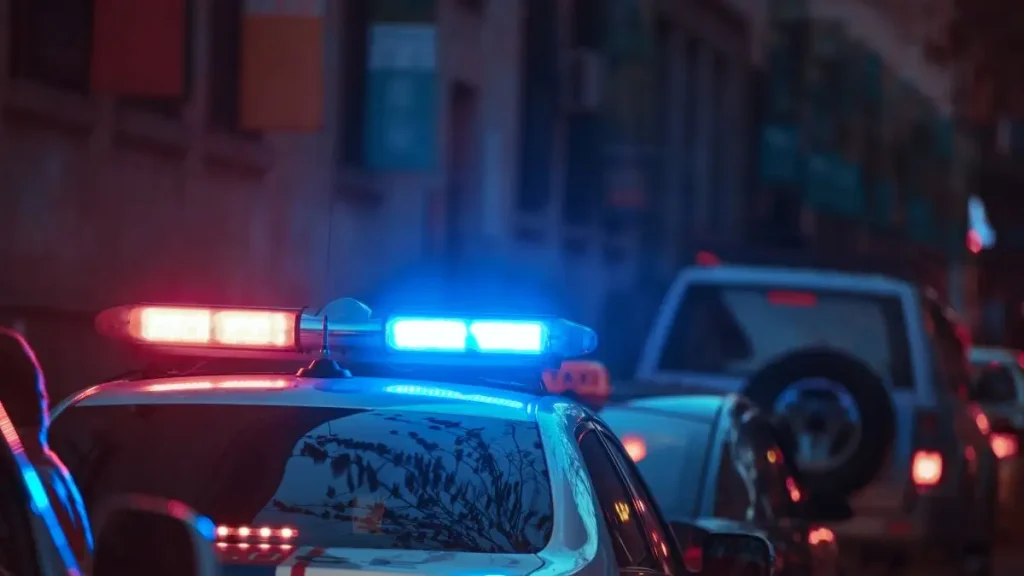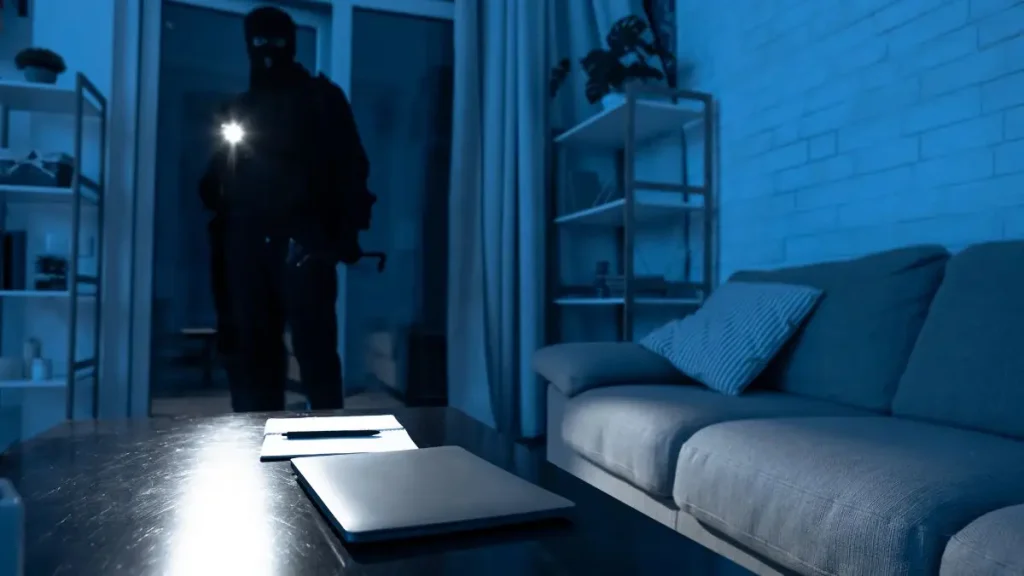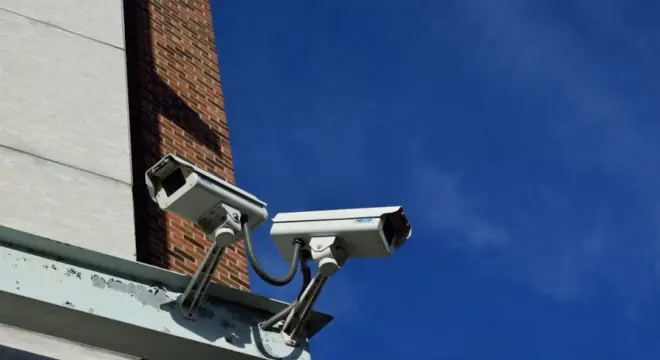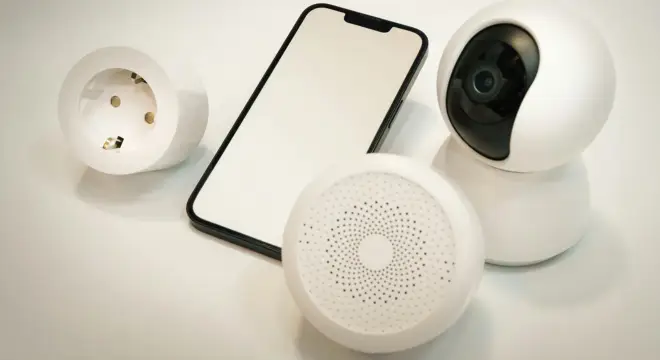Home Invasion in Pinellas Park Leaves Man Wounded, Fiancée Traumatized
I’ve read more police reports and crime briefs than I can count in my career, but this one hit differently. A couple in Pinellas Park opened their door to a man they knew—a handyman who had once repaired their hurricane-damaged home. In their minds, he was someone they’d trusted. That trust shattered in seconds.
It happened on a Tuesday afternoon. McKenzie Bray was home alone when she heard a knock. She thought it was the mailman. Instead, it was Stephen Houpt, a man who’d been inside their home before—this time, forcing his way back in. Within moments, he struck her in the head and tied her up, taping her to the bed.
And here’s the detail that gives me chills: the neighborhood had been without power for hours after a nearby electrical incident. No cameras. No lights. Neighbors now believe Houpt knew this and used it to his advantage. If you’ve ever had an outage, you know how quickly your home feels more vulnerable.
By the time McKenzie’s fiancé, James Allen, walked in, the scene was already a nightmare—his partner bound, the attacker still inside. James didn’t back away. He confronted Houpt, only to be stabbed in the eye with a screwdriver and in the hand with a knife.
The fight that followed was brutal, desperate, and—thankfully—ended with both victims alive and police rushing in.
When I hear stories like this, I can’t help but wonder: how many of us would recognize the warning signs before it’s too late? And more importantly—would we be ready if it happened to us?
Step-by-Step Timeline of the Home Invasion
I’ve pieced this together from the police report and WFLA’s on-scene coverage, and it’s still hard to process how fast things escalated.
It started around midday, August 12. McKenzie Bray was alone at home when there was a knock at the door. She thought it was just the mailman. According to WFLA News Channel 8, that “mailman” turned out to be Stephen Houpt—a handyman she and her fiancé had hired before to fix hurricane damage.
Within seconds, Houpt pushed his way inside. He hit McKenzie in the head and tied her up with tape, leaving her stuck on the bed.
A short time later, James Allen came home. Imagine walking into your bedroom and finding your partner bound and a man you once trusted standing over her. That’s exactly what James faced. Houpt, according to police, said he planned to knock him out, tie them both up, and take their money.
The fight that followed was vicious. Houpt attacked James with a screwdriver, stabbing him in the eye, then slashed his hand with a knife. James fought back, grabbing Houpt’s knife and stabbing him until police arrived. All three ended up in the hospital, but the couple survived.
Firsthand Accounts from the Survivors

Hearing James and McKenzie tell it in their own words hits harder than any news copy.
“He did a little bit of work for us… fixing up damage done by hurricanes,” McKenzie told reporters. “I thought he was the mailman.” That split-second assumption changed her life.
James’s account is even more raw: “He stabbed me in the eye with a screwdriver and then in the hand with a knife. I took his knife from him and started stabbing him.” You can feel the adrenaline and fear in every word.
As someone who’s covered dozens of violent crime stories, I can tell you—these aren’t the kind of wounds that heal overnight, physically or emotionally.
The Role of the Power Outage — Coincidence or Calculated?
This is the part I can’t stop thinking about, and you probably won’t either.
For several hours before the attack, the neighborhood had no electricity after what neighbors called a “power explosion.” No lights. No working security cameras. No deterrents.
One neighbor, Christina Wilkes, told that she believes Houpt knew about the outage and timed the attack for when the couple was most vulnerable. “My thinking is… whoever had to know there was no power and took advantage of no cameras,” she said.
Whether you believe that or not, the takeaway for you is clear: outages don’t just mean inconvenience—they can strip away your home’s security in an instant.
Who Is Stephen Houpt?
Houpt wasn’t a stranger. He had been inside their home before, hired to repair hurricane damage. That’s why McKenzie opened the door without hesitation.
This isn’t just about one man’s violence—it’s about the risk that comes when someone blends into the background of your life. A contractor, a delivery person, a neighbor you wave to in passing… most are good people, but some will use familiarity as their way in.
The question is—how do you tell the difference before it’s too late?
Just weeks ago, three people were charged in an Anderson County home robbery at gunpoint, showing how these violent crimes aren’t limited to one location.
Charges and What They Mean in Florida
Once Houpt is released from the hospital, police say he’ll be booked into the Pinellas County Jail on charges of:
- Home invasion robbery – Entering an occupied dwelling with intent to commit a robbery, using force or threat. In Florida, that’s a first-degree felony, often carrying a possible life sentence.
- Aggravated battery – Causing great bodily harm or using a deadly weapon in an attack.
- False imprisonment – Forcibly restraining someone against their will.
If you’ve never looked up these definitions before, it’s worth doing now. Knowing the legal language isn’t just for lawyers—it’s for anyone who wants to understand exactly how the justice system measures crimes like this.
In some cases, home invasions escalate to shootings, as seen in a Graham incident where two suspects were arrested after a violent confrontation.
How Common Are Home Invasions by Known Service Providers?

This might sound like the plot of a TV drama, but it happens more than most of us want to believe.
According to Florida Department of Law Enforcement data, thousands of home invasion robberies are reported statewide each year. The twist? A small but alarming percentage involve someone the victim already knew—like a handyman, cleaner, or repair technician.
You and I trust these people because they’ve been in our homes before. But trust without verification is exactly what makes these crimes possible. Criminals who know your layout, your routines, or your security blind spots have a dangerous advantage.
Similar patterns have been seen elsewhere, like in an armed home robbery in South Carolina where two suspects were caught but one remains on the run.
Safety Lessons from the Pinellas Park Case
I’ve covered enough of these stories to know prevention is never perfect, but you can tilt the odds in your favor.
- Vet every service provider. Even if someone comes recommended, check their ID, licenses, and online reviews.
- Have a plan for outages. Keep backup lighting and, if possible, a battery-powered camera or alarm.
- Never open the door without visual confirmation. Peephole, window, or video doorbell—anything to see who’s really there.
- Trust your instincts. If something feels off, don’t ignore it.
If you’ve ever thought, “That could never happen to me,” remember that McKenzie and James thought the same thing.
For more quick safety updates and alerts when similar incidents happen nearby, you can get them directly on WhatsApp—many readers find it useful to stay informed in real time.
Recovery and What’s Next for the Victims
Both McKenzie and James are recovering from their injuries, but the emotional recovery will likely take much longer. Physical wounds can heal in weeks or months. The feeling of being safe in your own home? That’s harder to get back.
Police say Houpt will face his charges once released from the hospital. For the victims, that means a court process, possible testimony, and reliving the attack in a legal setting.
If you’ve ever been through something traumatic, you know how much it helps to have community support. For McKenzie and James, that support could make all the difference in the months ahead.
If you’ve been through something similar or have tips on staying safe, share them in the comments below—your experience might help someone else.
Final Takeaways on Trust, Safety, and Vigilance
You don’t need to live in fear. But you do need to live aware.
Crimes like this aren’t just about bad luck—they’re about opportunity. Houpt had prior access, knew the home, and may have even used the power outage as a window to strike. That’s why you and I have to close those windows wherever we can.
Know who you’re letting in. Prepare for the unexpected. And remember: the time to think about home safety isn’t after something happens—it’s now.
What about you—have you ever let someone into your home without a second thought? And looking back, would you do it differently today?
You can read more real-life home invasion cases and safety tips in our home security section for a deeper look into how these incidents unfold.
Disclaimer: This article is based on publicly available police reports, verified victim statements, and credible local news sources. Some investigative details may change as the case develops. We will update this story if new, confirmed information emerges.


